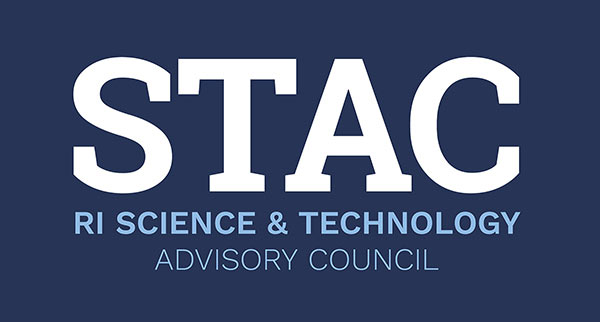Christopher Rose
Professor, Rhode Island School of Design
Think about how small children learn about the natural world. They observe, explore, find something interesting, pick it up and study it. They ask a parent or teacher to tell them about it. They draw pictures of it. They experiment to find ways (often unconventional!) to use it.
Fast forward 20 or so years. Students studying the sciences are typically delivered information. They’re taught the corresponding math and equations. They perform highly specific experiments in a lab, and write scientific papers to inform others in their field of their findings. While essential in the appropriate circumstances, there is a great deal of interest in what this approach may be excluding, particularly in how science is taught and to whom.

Researchers at Brown, URI and RISD, joint recipients of a 5-year EPSCoR (Experimental Program to Stimulate Competitive Research) Grant from the National Science Foundation, believe that the sciences could benefit from a more interdisciplinary, inquiry-based model, incorporating the arts into technical education—even, and especially at the university level. Call it child-like if you will, it’s a more natural approach to teaching and learning—incorporating the exploration and experimentation that, according to Margaret Honey, president and CEO of the New York Hall of Science, “is at the heart of effective education.”
The $20 million grant from NSF/EPSCoR will fund comprehensive research into innovative approaches to visualizing data and communicating scientific findings. This project, which last year ran two events at RISD entitled “Making Science Visible”, will feature a series of semester-long interdisciplinary “studios”. These studios will combine the strengths of art, design, science and the humanities to explore and solve issues in marine biology, a focus chosen because of the geographical context of the State of Rhode Island and the internationally renowned marine research capabilities of URI. Working together, the partner institutions offer expertise from more than one field.
Contributing to this research is an initiative known as “STEM to STEAM”, a separately funded NSF workshop event held at RISD in January 2011. Led by Principal Investigator Christopher Rose, visiting professor at the Rhode Island School of Design, STEM to STEAM aims to examine and develop strategies for enhancing STEM (Science, Technology, Engineering, Math) education through the integration of art and design thinking (STEM + Art = STEAM).

Professor Rose, who teaches in Furniture Design and in Graduate Studies at RISD, no stranger to the subject. He received a 2010 Award of Merit by the Award Council of the International Institute for Advanced Systems Research and Cybernetics for his work with The Breathing City, an art and science collaboration in the U.K. between an urban meteorologist, a sound-art composer, designers and a data programmer. “The intention was to devise this ‘encounter space’ where all kinds of people, whether they were families, children, experts or other interested parties could encounter complex issues about climate and behavior of complex systems, and find themselves sharing information and experiences in ways they’re not used to. It was about the public engaging in science, and in seeing connections in the processes of science.”
Here in Rhode Island, Professor Rose and Professor Brian K. Smith kicked off the STEM to STEAM initiative at RISD by bringing together 60 leaders from the fields of science, creative IT, engineering, art and design, mathematics and education to strategize about innovative ways to fuse these fields and teach new approaches to creative problem solving. “It was a really interesting, engaging, fast-paced series of activities,” says Professor Rose. “All these different specialists met and spoke about ideas, so we got a kaleidoscopic view of ideas about where the arts and sciences connect, and why it’s important for education at different ages.”
Everyone agrees that an interdisciplinary approach is key, but only if it’s done right. “The term ‘interdisciplinary studies’ is used a lot,” explains Professor Rose, “but it often means that you get two or more people of different disciplines in the room—that doesn’t mean that you have an interdisciplinary teaching and learning strategy. For something to be exciting and transformative, something trans-disciplinary has to occur, something that isn’t located in either of those root disciplines but is new—a new kind of insight or process. If you put together two experts from different disciplines that study the same thing—as with an oceanographer and a surfer—you have two completely different experiences which are connected by the materials of their subject, and students get a sense of all the territory in between.”

Other issues matter too. What kind of space is teaching and learning taking place in? How are specialized learnings being communicated to a broader audience? What kind of assumptions are we making about a subject, and how can we make sure this isn’t limiting our understanding? How is all this learning about learning being applied to educating younger children?
Professor Rose feels strongly that the art and design world has a lot to contribute. “There’s a fascinating potential to integrate the kinds of practices that artists and designers take for granted, like the exploration of new ideas without any kind of defining structure to start with. Visual research, a playful approach with materials, experimentation; these kinds of activities can be highly significant in solving problems, since they allow unexpected insights to occur”.
Rose also believes that “design is the quintessential cross-disciplinary activity. A designed object ends up being the embodiment of a value system that’s about materials, processes, people, systems, society; everything is recorded in the nature of the object. The objects with which we presently have surrounded ourselves are mostly deeply problematic and evidently need to be totally re-imagined. Now that we are seeing the global connectedness and the unintended consequences of the many processes we are embedded within, it makes sense to study the whole thing as if through the eyes of a child. ‘STEM to STEAM’ is of international interest in re-imagining the future of education. Where better place to begin than where the land meets the ocean?”
